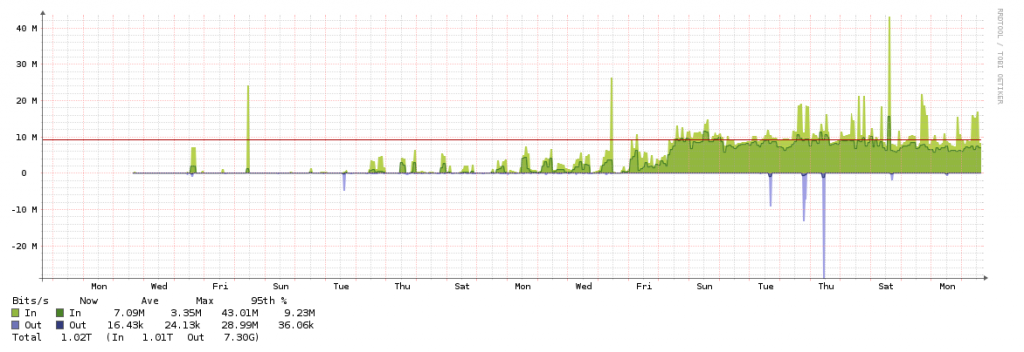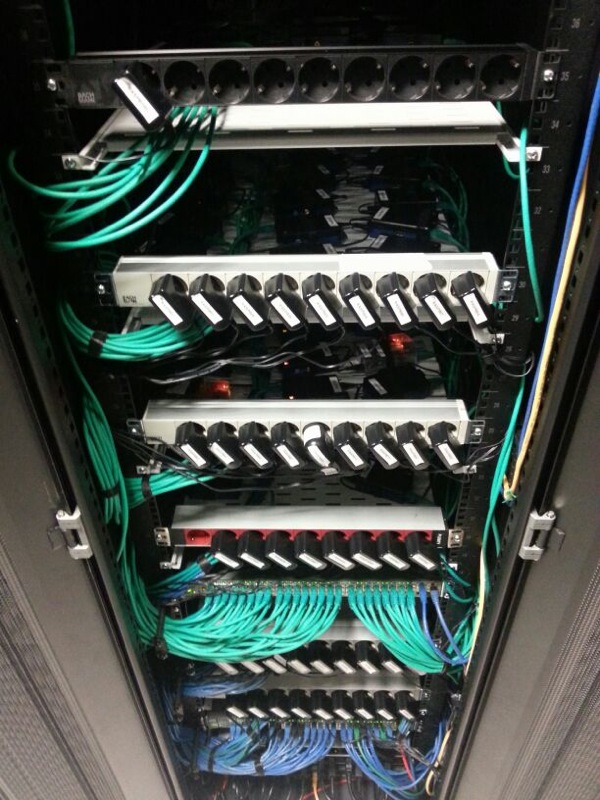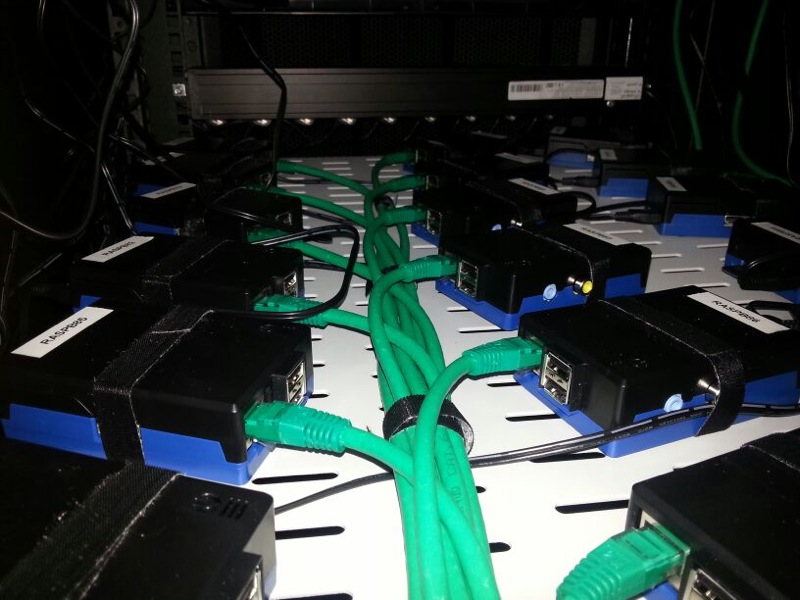|
Tablet computers and e-readers have been garnering mainstream attention over the course of the last few years, and many users are gravitating towards these devices. Apple has sold over 100 million iPads since first launching them two years ago and an Android tablet is activated almost every minute. Advertisers are keen to adapt to this new digital trend with something other than evasive adverts that permeate the internet. The magazine industry is trying to adopt standards for advertising and capturing big data in order to attract advertising dollars. A recent report by the Custom Content Council and ContentWise found that 39% of marketing budgets accounted for digital advertising. This 12% increase from 2011 certainly is a sign of the times. Still, digital advertising in general is thought to only be 3% of the industry magazine industry. The Association of Magazine Media and the Alliance for Audited Media is making in-roads to adopt a series of standardizations for capturing user metrics via Big Data and to implement a series of steps to attract advertisers. In order to facilitate a better road-map for digital publishers to produce more big data, the MPA has formed a new relationship with five analytics companies, including Google and Adobe, to take previously incomparable tablet reader data and present it in an easy to read fashion. “Our average publisher is seeing 85% growth in readership in the past six months,” said Lynly Schambers-Lenox, marketing manager of Adobe’s digital publishing suite of software. “We think the proliferation of devices is driving that increase.” The industry’s major publishers such as Hearst and Conde Nast will be participating in a new pilot, which is poised to start in October. This will begin the process of using the same streamlined process with the same analytics tools. If the pilot goes well, the next step would be to find a third party to audit the data, a challenge unto itself as a research firm would be betting big that the time and resources required to develop a new tool would pay off. The Alliance for Audited Media would like the job, but it’s unclear MPA wants to go in that direction. There are many conundrums when it comes to standardizing digital magazine usage for the end-users. If you look at the physical download, do you capture the information when it was initiated or when it has been completed? What do you do if someone buys a magazine but doesn’t open it for two weeks? What is the cutoff point? Publishers are facing these challenges in presenting a unified strategy and and appeal to advertisers. When it comes to the traditional print industry, it is obviously waning and companies are seeking advertisers to fill the void of the digital editions. Without a series of guidelines on how you present data to advertisers, you will have many publishers doing their own thing, which makes it very hard to do business. Also, it does not help that publicly, major publishers are not forthcoming about their sales and advertising figures, which makes it hard to track the trends of the industry in North America. The Association of Magazine Media Moves Closer to Adopting Digital Standards is a post from: E-Reader News |
A Semi-automated Technology Roundup Provided by Linebaugh Public Library IT Staff | techblog.linebaugh.org
Thursday, April 18, 2013
The Association of Magazine Media Moves Closer to Adopting Digital Standards
The Slow Demise of the Japanese Electronics Industry. Here’s Why.
| There have been a silent but far reaching changes in the consumer electronic scene over the last few years. It’s the slow but steady decline of the once mighty Japanese electronics industry; what we see today can be considered just a shadow of what it once was. Unfortunately, the shadow is only growing longer, which implies the sun might well be setting in the Land of the Rising Sun. The likes of Sony, Sharp, Panasonic, Hitachi, and other popular Japanese brands are fast losing their grip on the electronics scene. In fact, the situation is so drastic that Hitachi has resigned completely from the electronics scene and has instead taken refuge in heavy engineering, once its forte. The company has washed its hands of making entities (read electronics business) and is instead into selling heavy machines as well as taking on the engineering aspect of its products. Hitachi’s current boss, Hiroaki Nakanishi, 66, has claimed the move is paying off as the company is already out of the red and has regained profits. Things aren’t near as rosy for the others, though Sony is still making a profit, albeit a marginal one by its own standards this year. Sharp, which has been bleeding profusely for the last few years, seems to have reached a terminal phase. It may even cease to exist, unless there is a big cash infusion soon to maintain the company. It might be slightly better for Panasonic, though it also is likely to report a huge loss, something to the tune of about $9 billion. So why the sudden and violent crash from the high flying 80s and 90s to almost a non-entity in the new millennium? Japanese economist Gerhard Fasol claims it’s the digital revolution that proved to be the too much for the Japan based electronic powerhouses to deal with. Sony, Sharp, and nearly all of its compatriots have excelled in the mechanical side, but found the going tough when computer chips came to take over the working of a device. Of equal importance is the software, again something that the Japanese have traditionally never developed in-house. “The Sony Walkman is a classic example,” said Gerhard Fasol. “It has no software in it. It is purely mechanical. Today you need to have software business models that are completely different.” No wonder, the once almost indispensable Sony walkman has been taken over by the likes of the iPhone or the iPod. The likes of Apple and Samsung are calling the shots in Sony’s own backyard. Apart from the devices themselves, the way they are put together is another area where the Japanese giants are counting their losses. The manufacturing base has almost exclusively shifted to China and Taiwan, owing to the economics involved. It costs a fraction of what it would be in Japan to manufacture a device in China and Taiwan. Also, it’s not the best technology that determines a product’s success these days. Instead, a solid sales and marketing strategy has assumed significant importance towards a product’s overall success in the market. Sony is ahead in the race among its domestic competitors, however, and has already made it known the company intends to be a significant player in the smartphone segment. Its recently launched Xperia Z is rumored to be doing well enough and Sony hopes to replicate the same with its Xperia based tablet offerings as well. It is also working hard to register a presence in the TV segment as well and has recently launched the 84 inch 4K TV, which will display it as leading the technology scene if not drive home huge sales. It will be interesting to note that Apple makes the bulk of its profit from the tablet and smartphone sales, as well as the ecosystem surrounding them. Sony also has a solid presence in the laptop or notebook segment with its Vaio series, though its survival here depends on what notebook/ultrabook/hybrid tablets it launches based on Microsoft’s latest platform, Windows 8. Sony has also stated its next gen PRS-T3 e-reader will be announced soon, another area where the Japanese giant does have a strong presence. As for Sharp, it’s shaping out to be the LCD panel maker of choice for both Apple and Samsung, both of whom have picked up stakes in the ailing company. Interestingly, Apple’s enmity with Samsung has proved to be a boost for Sharp, as the latter is now slated to supply the panels that Apple had been sourcing from Samsung. However, Japan still has a vast, extremely talented workforce that it can fall back on. Then the sheer number of highly educated men and women that it can deploy on a given task is another positive quality that can script the next turn around in the country’s favor. It will be interesting to see how things shape up in the next year or two.
The Slow Demise of the Japanese Electronics Industry. Here’s Why. is a post from: E-Reader News |
Kobo Aura HD Nighttime Reading Tests
|
The Kobo Aura HD marks the company’s second iteration of a front-lit display on your traditional e-reader. No other company in the world has produced a second generation e-ink device that will allow you to read in the dark, and many people have questions on how it stacks up against the competition. Today, we compare the Kobo Aura HD against the Amazon Kindle Paperwhite, Nook Simple Touch with Glowlight, Kobo Glo, Kobo Arc, and the Bookeen Cybook Odyssey HD. These Nighttime Reading tests are very short videos and are conducted in our studio with all of the lights turned off. We show you how the front-lit displays compare against each other. Most of the tests take place on the main home menu and then within an ebook. Also, you can get a very good sense of how the screen technologies really function in real world conditions. Our last test compares the Aura HD against the Kobo Arc, an Android tablet. Many people often ask us the prime differences between a front-lit display and a back-lit one, so here we go into detail with the pros and cons of each. Kobo Aura HD Nighttime Reading Tests is a post from: E-Reader News |
Oliver and Amelia make a bee box
| Oliver is five, and has produced this lovely bee box for school. He did the modelling, the painting and some of the soldering, and had lots of help from his very talented big sister Amelia, who is seven and did all the programming for this project in Scratch. The bee is made of clay, and has a magnet inside his body. His location is determined by some reed switches inside the box, which are connected to the GPIO pins on a Raspberry Pi, as are the LEDs in the flower and the hive. Amelia’s Scratch program, running on the Pi, then uses a TV to display what the bee’s up to (and, to a very enthusiastic Oliver’s great pleasure, emits a buzzing noise). I mean it about the enthusiasm. Seriously. If you could bottle this stuff you’d make a fortune. Full instructions on how to make your own bee box (it’s a really enjoyable project for parents to set up with their kids, and I’m sure you can think of a million ways to customise it) are available at Dad Stewart’s website, along with the Scratch code you’ll need, some GPIO instructions and a costed parts list. Thanks to Oliver and Amelia from all of us at the Foundation – we are flapping our arms and shouting “BUZZ” right along with you. |
Online Job Search Resources
| Searching for a job online can be difficult. To help you find the perfect position, we've compiled a list of basic job search resources. |
URL: http://blog.gcflearnfree.org/2013/04/18/online-job-search-resources/
Raspberry Pi colocation
| Liz: Thor de Regt, from Amsterdam, emailed me back at the start of the month to tell me about the success his company has been having offering free Raspberry Pi colocation. There are a few companies around the world offering this service for free for Raspberry Pi users, and we were interested to find out how and why this was going on. Here’s what Thor had to say. Free Raspberry Pi colocation – How it all began, our success and our findings In late February we began giving people the opportunity to colocate their Raspberry Pi in our data center – for free. Now, almost two months later, we have over 400 people making use of the initiative with new signups still coming in daily. Of course this makes for a good story which we’re happy to share with you and the rest of the Raspberry Pi community! The beginning So, how did all this start? Well, it wasn’t a warm summer evening in ancient Greece (in fact it was a cold morning last winter in the Netherlands), when we thought it would be pretty cool to host a couple of Raspberry Pi’s in our data center. We were pretty confident that there would be at least some people interested. I remember getting excited by the thought of reaching enough people so we could end up hosting around 50 Raspberry Pi’s. Two days after the website went live that goal was quickly achieved though, but more on that later. Raspberrycolocation.com Before we could share the initiative with anyone we needed a platform, and thus raspberrycolocation.com was created. To keep our tone of voice in line with the Foundation we made the website as transparent as possible and people really seem to appreciate that. When people visit the website they can see for themselves that we have nothing to hide and that there is no hidden agenda. We believe this definitely contributed, in one way or another, to the popularity of the initiative so far. People just dig generous offers and our service is no different. I mean, where else can you get a 100 Mbit uplink, 500 GB bandwidth, power and the ability to boast about it to your friends for free?  One of the illustrations made for the website to give some pizazz to our applications page. In this illustration you can “clearly” see two raspberries chatting in fruit language. Success Just a few minutes after the website went live we knew we were in for something good. After having sent out a Facebook post and a tweet, we received close to 60 signups within two days. That amount more than tripled when we included the project in our not so monthly newsletter, and has been steadily increasing since. Every now and then the website gets shared on a popular forum or blog (like raspberrypi.org), usually resulting in a few thousand visitors for a day or two. At this moment we have received close to 450 signups, about 150 of which are currently operational. If we get all of them up and running we’re probably looking at three racks filled with Pi’s. Yum! Setbacks The fact that the initiative has been so well received is great news of course, but also presented a few drawbacks. Because we had so many more signups than we first anticipated, our initial stock of Raspberry Pis and their necessary accessories were gone by the end of the first day. Thankfully, ModMyPi ships pretty fast (and their 5% profit donation is definitely a win), so getting new Raspberry Pis wasn’t that much of a problem. No: the real problem for us was the power adapters. For safety reasons, we wanted to supply the power adapters ourselves, but we quickly found out that the ones we had were no good and it took us quite a while to actually get a model we could trust. Ultimately, we went with the ones recommended by RS Components. Higher in price than we first set our sights on, but at least you can count on them! Our setup Currently we’re able to place 150 Raspberry Pi’s in a single rack. However, the method we use isn’t exactly the most efficient solution, as can be seen on the picture. For now it does get the job done though. In order to make better use of the space we have, we are working on a few custom designed boards that should make it possible to place close to 500 Raspberry Pi’s in a rack; this setup will also give us the opportunity to reboot them from a distance, but unfortunately is quite expensive to fabricate in its current state.  The prototype consists of 32 outlets connected to a power supply of 45 amps. We’re currently working on getting the cost per outlet down and maybe increase the outlets per board to 48. With the increase, we could house close to 500 Raspberry Pis in a single rack. Our findings When we first started, we thought only a few people would actually buy a Raspberry Pi through us. To our surprise this was not the case, as 62% of all signups bought Raspberry Pi’s (80% 16 GB version, 20% 8GB version). This amount is much higher than we originally thought it would be, but actually makes sense when you think about it. If I was colocating a Pi, I know I would buy a new one because there is just no way I’d want to send my current one away. The people that did send their own Pi probably had it as an extra just lying around the house. Another interesting thing is how they’re performing so far. Since we always monitor the power and bandwidth usage of our racks, monitoring the Raspberry Pi rack was pretty easy and gave us some great insights. As of 9 April 2013, a total of 150 Raspberry Pis steadily used 4.5 Amps on average and about 1 TB of bandwidth last month. Now, most of them were only placed a few days or weeks before, so this may not be the most accurate picture ever; however, it does give a general idea on how they perform. Oh well, I guess we’ll just have to follow up on this post in the future!  Click to enlarge. As you can see, only 1 TB of bandwidth has been used by 150 Raspberry Pis. This number is quite conservative in our opinion. The guys facilitating all this That’s pretty much the journey we have had so far regarding the project. For anyone interested in who we are and what we do (I’ll keep it short): we’re PCextreme, a webhosting company from the Netherlands offering a wide range of online services at competitive prices, such as domain name registration, colocation services, web- and soon cloudhosting. Should you want to help us out with the initiative, then feel free to share this post or the raspberrycolocation.com website with your friends so everyone can get in on the action. If you have any questions about us, the initiative or anything in general then feel free to ask them in the comments section. Thanks for reading! |
Digital Newspapers Growing in Popularity, Local Papers Need to Follow Suit
| Industry experts have been predicting the death of newspapers ever since the birth of televised news. Those predictions only became louder with the explosion of online and tablet-based newspapers. But an article by Laura Hazard Owen for paidContent.com demonstrates that digital editions have seen exponential grown while print is far from gone, but that the small-town newspaper is going to have to work to keep up. According to Owen, “The NAA-Nielsen study surveyed 5,000 adults on ’11 different metrics for engagement, including trust and ethics, how connected media makes people feel, the value or inspiration it adds to life, and the effectiveness of advertising.’ On that measure, print and online newspapers came out on top.” One other key piece of data from the Newspaper Association of America survey was the print advertising in newspapers was still very important to consumers, with print newspapers and digital newspapers scoring higher than any other form of advertising for effectiveness and for consumer sentiment that the ad would actually translate into sales. But if newspaper advertising is more effective, why are newspapers losing billions of dollars a year in advertising revenue? That, coupled with a drop in print subscriptions as more readers turn to app-based national news, may have caused a lack of confidence in newspaper advertising by companies who don’t know that consumers still put a measure of trust in newspaper ads. The survey results, along with other data, have shown that the publishers who still print newspapers understand the need to move to mobile devices. With more and more national newspapers making at least a digital edition in addition to their print, if not exploring going wholly digital, the progression to handheld devices is promising. The smaller, locally-owned newspapers need to follow the digital lead with web-based and apps for reaching their subscribers and their advertisers.
Digital Newspapers Growing in Popularity, Local Papers Need to Follow Suit is a post from: E-Reader News |






